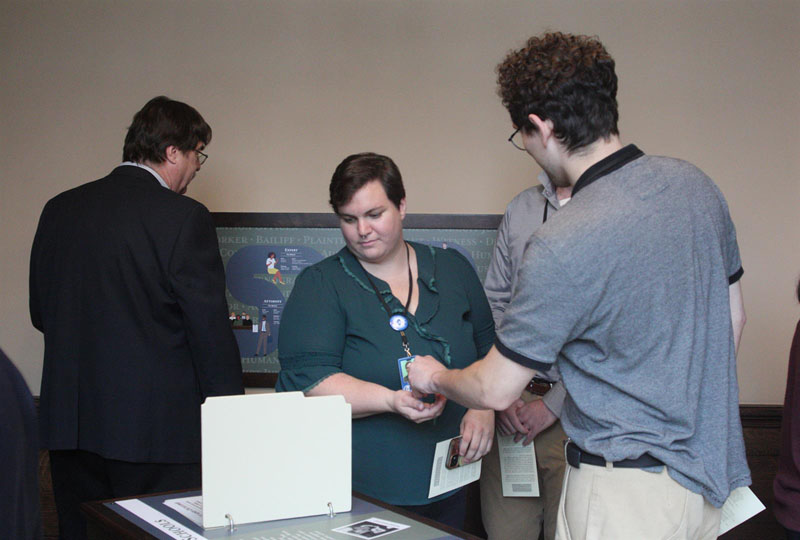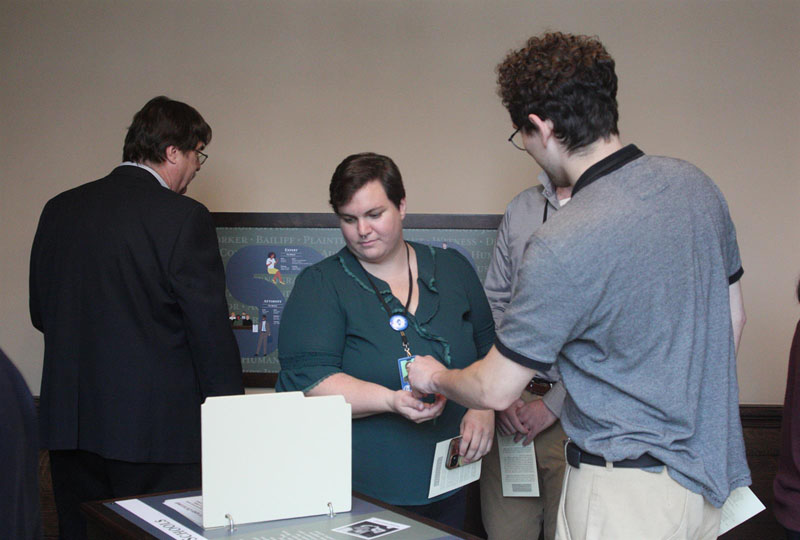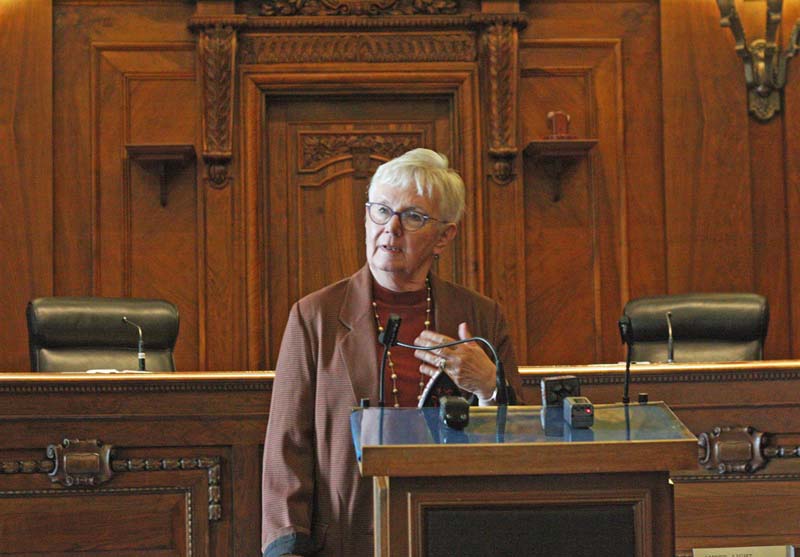
Displays offer insight into role of judicial branch
By Peter Hancock
Capitol News Illinois
phancock@capitolnewsillinois.com
In 1946, the Illinois Supreme Court heard a case that would eventually become a landmark in American legal history.
The public school district in Champaign, like many other districts in Illinois at the time, allowed a group of local religious leaders to use their schools to teach elective classes in religion and openly encouraged, and sometimes coerced, students to participate in them.
Vashti McCollum, an atheist and the mother of a Champaign student, complained, saying her son was ostracized by other students for not attending them. She eventually sued in state court claiming the use of public schools to teach religion violated the establishment clause of the First Amendment’s guarantee of freedom of religion.
The Illinois Supreme Court rejected her claim, but the U.S. Supreme Court later reversed that decision, saying the practice violated the separation of church and state.
That’s one of the cases that visitors to the Illinois Supreme Court building in Springfield can learn about and discuss at the court’s new learning center, which officially opened this week.
John Lupton, executive director of the Illinois Supreme Court Historic Preservation Commission, said at the opening that the learning center has hosted a few visitors, including a couple and their two children earlier this summer.
“And after looking at the controversial case, they began to debate the issue,” he said. “After their debate was over, one of the parents and one of the children agreed with the (state court’s) judgment, while the other parent and the other child disagreed with the judgment. This is exactly what we’re looking for.”

The building where the court now sits first opened in 1908 and it underwent a major restoration project in 2014. Lupton said the idea of the learning center had been discussed even before that restoration project, but because of budget issues, the state’s bicentennial in 2018, and later the COVID-19 pandemic, the project was delayed.
Now open, the learning center is on the second floor of the building, down the hall from the room where the court sits, in space that was once used by the Fourth District Court of Appeals. It was completed at a cost of about $130,000.
“We’re very excited about it,” Chief Justice Mary Jane Theis said in an interview. “It tells the story about the Illinois court system from 1818 to today.”

Lupton said the purpose of the learning center is to improve civic knowledge. One of the short-term goals, he said, will be to seek out civic education grants and partner with the Governor’s Mansion and the Capitol to provide tours for students visiting Springfield so they can learn about all three branches of state government.
“Studies consistently show that civic education increases civic engagement,” he said. “So during a tour of the Supreme Court building, in addition to seeing the courtroom and learning about the court’s important work, visitors will now end their tour at the learning center. And there they will learn about the important work of the court, explore the ways the court shapes our everyday lives and examine a few significant cases.”
Theis noted that courts are perhaps the least understood institution of government because most people have little or no contact with them. But she said it’s important for people to understand them so they will have trust in the court system.
“Alexander Hamilton said in Federalist 78, courts are the weakest branch of government because they have neither the power of the purse nor the power of the sword,” she said. “So where does the court’s power come from? It comes from trust.”
Capitol News Illinois is a nonprofit, nonpartisan news service covering state government. It is distributed to hundreds of print and broadcast outlets statewide. It is funded primarily by the Illinois Press Foundation and the Robert R. McCormick Foundation, along with major contributions from the Illinois Broadcasters Foundation and Southern Illinois Editorial Association.


